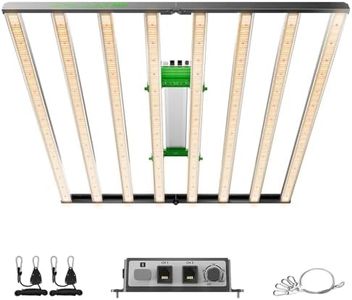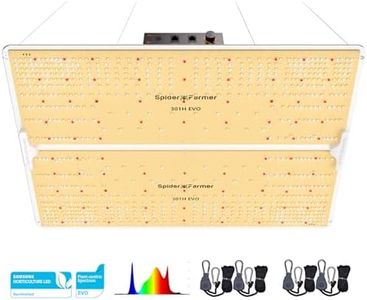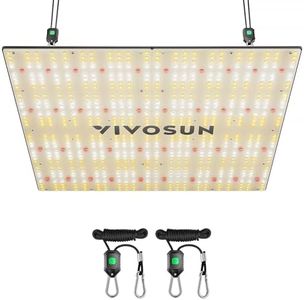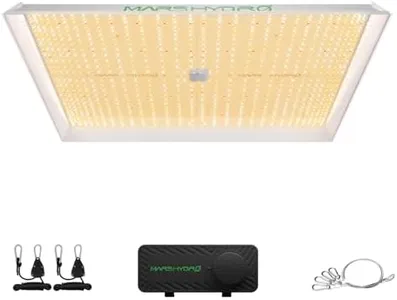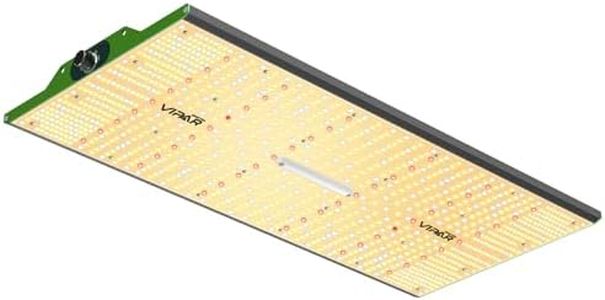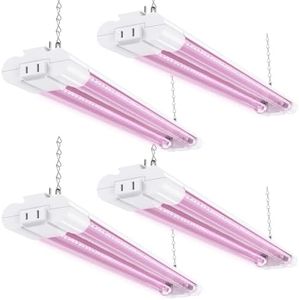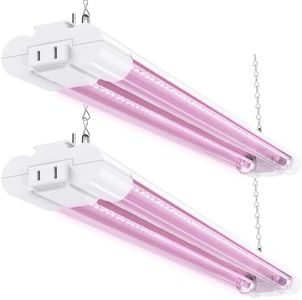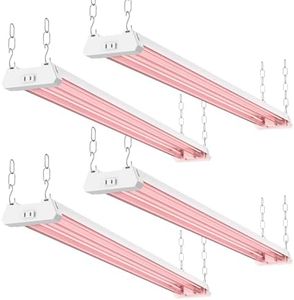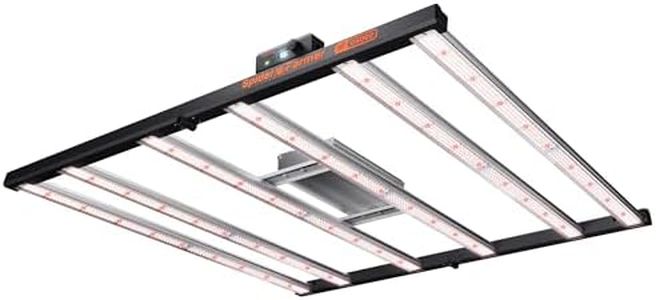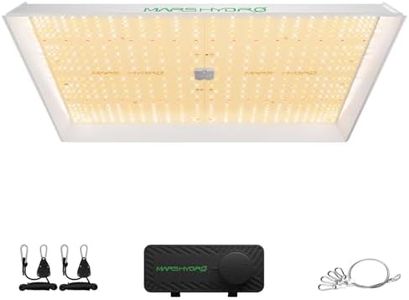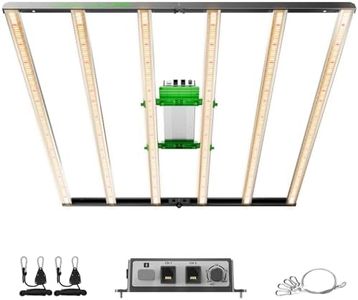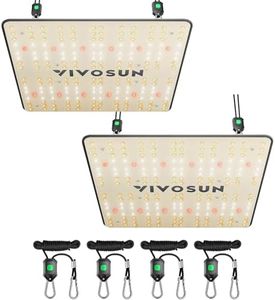10 Best Indoor Grow Lights 2026 in the United States
Our technology thoroughly searches through the online shopping world, reviewing hundreds of sites. We then process and analyze this information, updating in real-time to bring you the latest top-rated products. This way, you always get the best and most current options available.

Our Top Picks
Winner
MARS HYDRO 2024 FC-E1000W Foldable Bar Style Led Grow Lights for Indoor Plants Diode Full Spectrum Growing Lamp 1000Watt 5x5FT Dimmable Daisy Chain Commercial Achieve 2.8umol/J 3G/W
Most important from
1376 reviews
The MARS HYDRO FC-E1000W LED Grow Light is a versatile option for indoor growing, offering a full spectrum light that supports all stages of plant growth. It boasts a high light intensity with up to 2,000 µmol/m²/s PPFD, which is ideal for enhancing plant yield. The coverage area is suitable for a 5x5 ft flowering space, making it apt for larger indoor grow tents or commercial setups. Energy efficiency is also notable, with an impressive 2.8 µmol/j and a potential yield of 3.0 g/watt.
This grow light is designed with a foldable structure and detachable elements, allowing for easy installation and storage flexibility. Additionally, the dimming and daisy-chain features enable convenient control over multiple units, ensuring consistent lighting conditions for extensive cultivation setups. Heat dissipation is optimized through an aluminum heatsink and the option to position the driver outside the grow space, which helps maintain an ideal temperature. However, the product's weight of 31.8 pounds may pose a challenge for some users during installation.
The unit also requires the purchase of an additional iConnectu Controller for utilizing its smart features, adding to the cost. The MARS HYDRO FC-E1000W LED Grow Light is a strong candidate for commercial growers and dedicated hobbyists seeking robust performance and extensive control over their indoor cultivation environment.
Most important from
1376 reviews
SPIDER FARMER SF4000, Samsung LM301H EVO Led Grow Light, Full Spectrum Plant Lights, 450W Dimmable & High Efficiency & Deeper Penetration Commercial Lamps for Seedling Veg & Bloom in 4x4 Grow Tent
Most important from
12278 reviews
The Spider Farmer 2024 New SF4000 LED Grow Light offers impressive features for indoor growing enthusiasts. It uses Samsung LM301H EVO LEDs, known for high efficiency (3.14 µmol/J PPE per diode) and superior light quality, which enhances plant growth significantly. The full spectrum light (3000K, 5000K, 660nm, IR 760nm) is ideal for all growth stages, promoting consistent and high-quality yields. The blue and red spectrums are particularly beneficial during the blooming stage, speeding up flowering and boosting yields.
The new diode layout ensures uniform light distribution, which improves absorption and growth results across the plant canopy and roots. Additionally, the light intensity is adjustable with a dimming knob and compatible with GGS controllers, making it versatile for different growth stages and large areas of indoor growing. The fixture is energy-efficient, silent (no fan noise), and has a sturdy aluminum construction that dissipates heat effectively. Furthermore, Spider Farmer provides a reliable 5-year warranty and local maintenance support, ensuring peace of mind for buyers.
One potential drawback is the upfront cost, which might be higher compared to other options, but the quality and long lifespan of the product can justify the investment. Also, while the infrared (IR) diodes are dimmer than other red diodes, this is normal and can be checked using glasses. This grow light is particularly suitable for commercial planting and large-scale indoor growing setups, providing robust performance and reliability.
Most important from
12278 reviews
VIVOSUN VS3000 LED Grow Light with Full Spectrum Diodes & Daisy Chain Driver Dimmable Lights Sunlike for Seedling Veg & Bloom 300W Plant Grow Lamps for 3x3/4x4 Grow Tent
Most important from
5411 reviews
The VIVOSUN VS3000 LED Grow Light is a solid choice for indoor gardeners looking to support plants from seedling to bloom, especially in small grow tents around 3x3 to 4x4 feet. It delivers a full, sunlike spectrum (380nm-780nm) which is great for all growth stages, and its high light efficiency (2.9μmol/J) means it uses energy smartly with just 300 watts. The dimmable feature with four settings lets you easily adjust light intensity as your plants grow, which adds flexibility.
Coverage is suitable for small to medium spaces, making it ideal for hobbyists or those with limited room. The light's design keeps heat low without a noisy fan, so it won’t overheat your plants or disrupt your space. Plus, its IP65 rating ensures it’s safe in various indoor growing conditions. A helpful daisy chain function allows connecting multiple units, useful if you want to scale up.
This VIVOSUN grow light suits beginner to intermediate indoor growers who want quality full-spectrum lighting with low heat and adjustable intensity, particularly for small grow tents. The 300W power is efficient, though the brightness at 301 lumens is relatively low compared to some other grow lights, so it might not be powerful enough for larger or more light-demanding plants. The unit is also on the heavier side (about 17.6 pounds) and fairly large, which could make installation a bit challenging in tight spaces. If more intense light is needed for a bigger area, you might want to look for something stronger or add multiple units.
Most important from
5411 reviews
Buying Guide for the Best Indoor Grow Lights
Choosing the right indoor grow lights is crucial for the success of your indoor gardening. The right light can significantly impact the growth, health, and yield of your plants. When selecting grow lights, consider the type of plants you are growing, the size of your growing area, and your specific gardening goals. Understanding the key specifications will help you make an informed decision that best suits your needs.FAQ
Most Popular Categories Right Now


